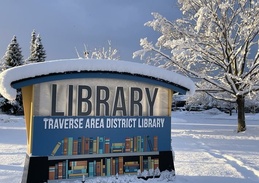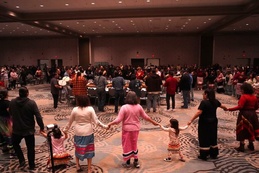Never Forget the Heroes
Spectator
By Stephen Tuttle | Sept. 7, 2024
Every year about this time we remind ourselves of the horrors of September 11, 2001. We’ll again see images of the planes hitting the twin towers of the World Trade Center and their subsequent agonizing collapse. We’ll also be reminded of the plane tragically slamming into the Pentagon and the lives lost, and saved, when passengers fought back against the hijackers on flight 93.
According to the 9/11 Memorial and Museum, 2,753 people from 58 countries (excluding the hijackers) lost their lives in the attacks on the towers. (Another 184 died in the attack on the Pentagon and 40 more on flight 93.) Among the dead at the World Trade Towers were 343 firefighters, 37 Port Authority Police Officers, and 23 New York City Police Officers. It was the worst day for first responders in U.S. history. And perhaps the best.
When the planes struck, best estimates are that there were between 16,400 and 18,000 people in the World Trade Center towers, though we’ll never know the exact number. And somewhere around 13,000 to 15,000 people were successfully evacuated. It’s true enough the heroes responding were not responsible for every evacuation, but they helped enough to make this the most successful evacuation from burning buildings ever. Had those first responders not gone in, far fewer would have made it out.
Once people got out of the buildings, a group of unsung heroes, beautifully detailed in an HBO documentary, sprang into action.
Manhattan is an island, and since authorities had no clue if additional attacks might be coming, they quickly decided to close access to all vehicles. Bridges, subways, and tunnels were quickly shut down, and, with Manhattan apparently ground zero for attacks, people were desperate to get off the island.
Water was the only viable escape route, and boats had already begun haphazardly picking up folks. It was not enough. Recognizing the problem and determined to find a solution, Coast Guard Lieutenant Michael Day issued his now famous radio call: “All available boats. This is the United States Coast Guard aboard the pilot boat New York. Anyone wanting to help with the evacuation of lower Manhattan report to Governors Island.”
Lt. Day, now Captain Day, had no idea how many, if any, boats would respond, but respond they did. Ferry boats, tourist boats, fishing boats, pleasure boats, party boats, dozens of tugboats, even ski boats and inflatable dinghies. As one boatman put it, “If it floated and they could get there, they got there.” The Coast Guard and local boat pilots organized the effort as best they could as more than 150 civilian boats took turns loading up, dropping off, and returning for trip after trip after trip.
The gold standard for evacuations by sea happened in May of 1940 when 339,000 French and British troops were trapped in the French port of Dunkirk. Over the course of nine days, all were successfully evacuated by hundreds of civilian and military boats.
No one will ever know the exact tally as no one was keeping track, but the Coast Guard estimated as many as 500,000 people were evacuated from Manhattan by boat on 9/11. It was the greatest rescue/evacuation by sea in history, and it took a bit less than nine hours in what has become known as the 9/11 Boatlift.
Meanwhile, people in airplanes also found themselves trapped. By 10am, all U.S. airspace was closed to all commercial and general aviation. Planes were instructed to land immediately at the nearest available and capable airport. This was a problem for those on transatlantic flights.
If they were less than halfway, they had to turn around, but if they were more than halfway…enter Gander, Newfoundland, population just over 11,000. Some 38 planes, mostly jumbo jets, with more than 6,500 passengers were diverted to Gander. Passengers were forced to stay in the aircraft for the first 24 hours, and when they finally deplaned they were not allowed to take anything with them.
The 70 percent overnight population increase proved no problem for the good people of Gander, who provided shelter, clothing, food, toiletries, everything for the bewildered passengers (remember there was no proliferation of “smart” phones in 2001, so information was not detailed or instantaneous). For five full days, the people of Gander treated their surprise guests like long lost friends in a remarkable display of decency and kindness.
Heroes can emerge from unlikely places when we need them most. We expect it from our first responders, honor their commitment, and mourn their losses. We likely didn’t anticipate the response from New York’s sometimes gruff boatmen who dropped everything and willingly and repeatedly motored into that toxic cloud not knowing what they’d find. Not to mention Gander, Newfoundland, pretty much in its entirety, willing to help just because.
We’re told to “never forget” the tragedies of 9/11. We should never forget the heroes, either.
Trending

Our Top Stories of 2025
Each year, we look back at the stories we’ve shared over the last 12 months and pull together the ones that got the mo… Read More >>
Winter Break at the Library
Trying to keep the kids busy while school is out? Head to the library! Dec. 22, take your 12+ tweens and teens to the Mesick… Read More >>
Umbo Is Coming...to The Little Fleet
Winter isn’t just coming—it’s already here. But if you want a break from the December blues, head to The L… Read More >>


